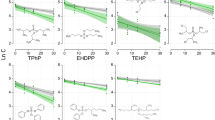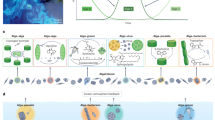Abstract
THE presence of living micro-organisms-algæ and bacteria—in Dead Sea water was demonstrated by me some time ago.1 It seemed, therefore, probable that life was also abundant in the sediment bed of the Dead Sea. To throw light on this point an investigation on a sample of sediment obtained from the sea bottom has been carried out.
This is a preview of subscription content, access via your institution
Access options
Subscribe to this journal
Receive 51 print issues and online access
$199.00 per year
only $3.90 per issue
Buy this article
- Purchase on SpringerLink
- Instant access to full article PDF
Prices may be subject to local taxes which are calculated during checkout
Similar content being viewed by others
References
Wilkansky, B. (Elazari-Volcani), NATURE, 138, 467 (1936). A full description will be published shortly.
Author information
Authors and Affiliations
Rights and permissions
About this article
Cite this article
ELAZARI-VOLCANI, B. Algæ in the Bed of the Dead Sea. Nature 145, 975 (1940). https://doi.org/10.1038/145975a0
Issue date:
DOI: https://doi.org/10.1038/145975a0
This article is cited by
-
Spatial distribution of diatom and cyanobacterial mats in the Dead Sea is determined by response to rapid salinity fluctuations
Extremophiles (2014)
-
The Expected Impact of the Peace Conduit Project (The Red Sea – Dead Sea Pipeline) on the Dead Sea
Mitigation and Adaptation Strategies for Global Change (2005)
-
The expected impact of the “Peace Conduit” project (the Red Sea - Dead Sea pipeline) on the Dead Sea
Mitigation and Adaptation Strategies for Global Change (2005)
-
Biotechnological applications and potentialities of halophilic microorganisms
World Journal of Microbiology & Biotechnology (1995)
-
Bacteria in the Bottom Sediments of the Dead Sea
Nature (1943)



